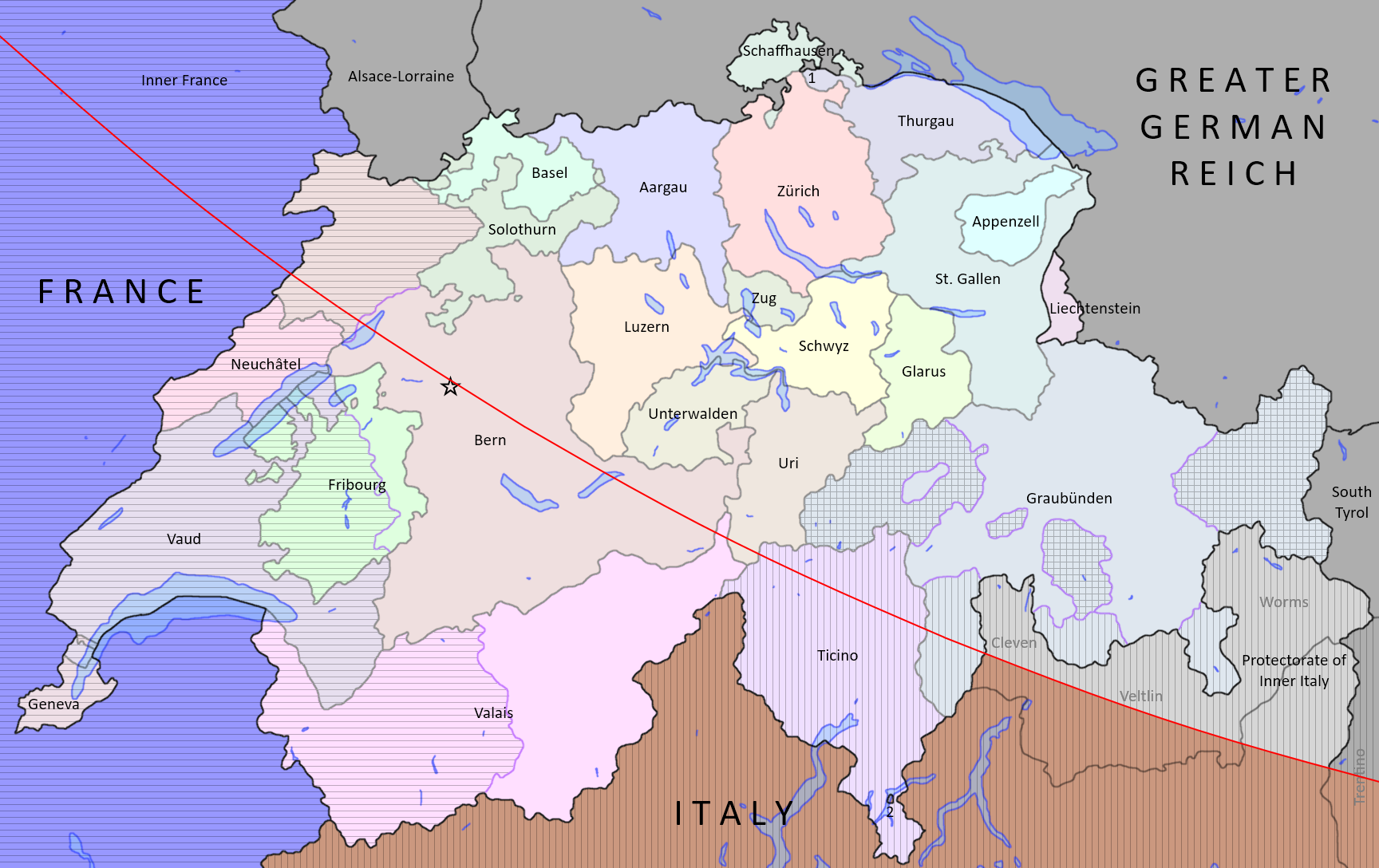1. Did Adamgerd mean Serbs or possibly the Sorbs, who are a small Slavic minority still present in eastern Germany at the time? Think they were left over from the German eastwards expansion from about the 10thC.
2. Historically all of the surviving Jews would be glad to escape German control, especially since it meant pretty certain death. The problem was that the Nazis didn't let them go and also there were limited places willing to take them. The latter may have changed now, especially as far as the west is concerned but the Nazis being willing to let the survivors escape is a big change. Especially since there are going to be a lot of stories coming out of what was happening in Germany under Hitler.
3. Actually there may well be Jews staying inside the dome simply because those still in hiding are probably going to be reluctant to trust the Nazis saying their going to be allowed to go and thinking its another trick to catch them.
4. This was what I feared if Germany kept most of their early conquests. Both the Czechs and the Poles, who will suffer even worse this TL than ours with the additional bloodshed on their territory, are unlikely to get any real freedom or human rights and security while the dome's in place. [True the Poles are likely to then suffer again from Stalin if it did come down]. There is less fighting in western Europe but that in the eastern region of the dome is likely to be even bloodier than OTL.
1. Oh, the Sorbs from Saxony! They are ok. The Nazis left them alone (with a few exceptions) because they were considered "sufficiently Germanized". That policy has no reason to change.
2. For many reasons (desire of peace with the West, desire to placate Adolphine, etc), the Holocaust had been stopped. Those stories are already circulating. That cat is already out of the bag.
3. That is indeed probable. However, they will probably come out of hiding after the fall of the Nazi Regime but they will still want to emigrate for various reasons (fear that the Nazis may make a comeback, dislike and fear of all Germans, displeasure with the antisemitism of the German population, better opportunities elsewhere, zionist appeal, etc).
4. There are around one million Poles in Greater Germany, mainly in Posen. There are about 200,000 Germans in the rest of Poland, mostly in "Wartheland". A (humanely organized) population exchange may settle that issue with much less human suffering than in OTL. The Protestant and partially Germanized (actually "Prussianized") Silesians from Upper Silesia, Masurians from East Prussia and Kashubians from West Prussia were mostly content of living in Germany and not very fond of Poland. In OTL, they were forcefully Polonized after the war.
There were few actual Lithuanians in Memelland and East Prussia. The Baltic Memellander did not consider themselves Lithuanian and preferred to live in Germany.
Danzig, Memelland and Upper Silesia had a clear German majority. West Prussia (the "Corridor") had a German / Kashubian Protestant majority. Posen had a significant German minority.
Sudetenland had a clear German majority. The Protectorate of Bohemia-Moravia was a Czech Autonomous State and it may gain its independence later.
There are Italians in South Tyrol (German majority), Trentino (Italian majority but it may be ceded back to Italy), Gorizia (Italian / Slovene mix).
There are Slovenes in Inner Slovenia (it will be made into an Autonomous State like Bohemia-Moravia and it may gain independence later on) and Gorizia.
There are some Frenchmen in Alsace-Lorraine (Alsacian majority, considered ethnic Germans speaking a German dialect and so are the Luxembourgish).
There were never any issues with the Danish minority in Schleswig.
In conclusion, Greater Germany has around 85% Germans and 15% ethnic minorities, just like most other European countries. If Greater Germany becomes a democratic country and the Czech and Slovene autonomy become functional and respected the situation will not be as nightmarish as you paint it. Moreover some territories with no or few ethnic Germans like Bohemia-Moravia, Slovenia, Trentino, etc, may be shed in the future.
Remember that a significant number of Poles, Czechs, Slovenes and other Slavs had lived for centuries under German rule (Austria, Prussia, Germany) and no attrocities have taken place except during the Nazi Regime. It is not right to suggest that they will be in any kind of danger as ethnic minorities in Germany. The Nazis were the exception, not the rule.
Moreover, "Germany's early conquests" were, with the exception of Bohemia-Moravia and Posen, territories with a German majority or at least plurality: Saarland, Austria, Sudetenland, Danzig, Upper Silesia, West Prussia. It would be certainly anti-democratic to separate those lands from their country, wouldn't it? The same would be valid for certain other territories such as South Tyrol (not Trentino), Eupen-Malmedy, Tiedje Line Area in Central Schleswig, etc.
Anyway, the situation in the eastern portion of the Dome cannot get bloodier than OTL because 45 years of Soviet Communism cannot be beaten by a few more months of Nazism or War in any situation. Sure, the Nazis killed more people than the Communists per time interval but not by such a wide margin.






